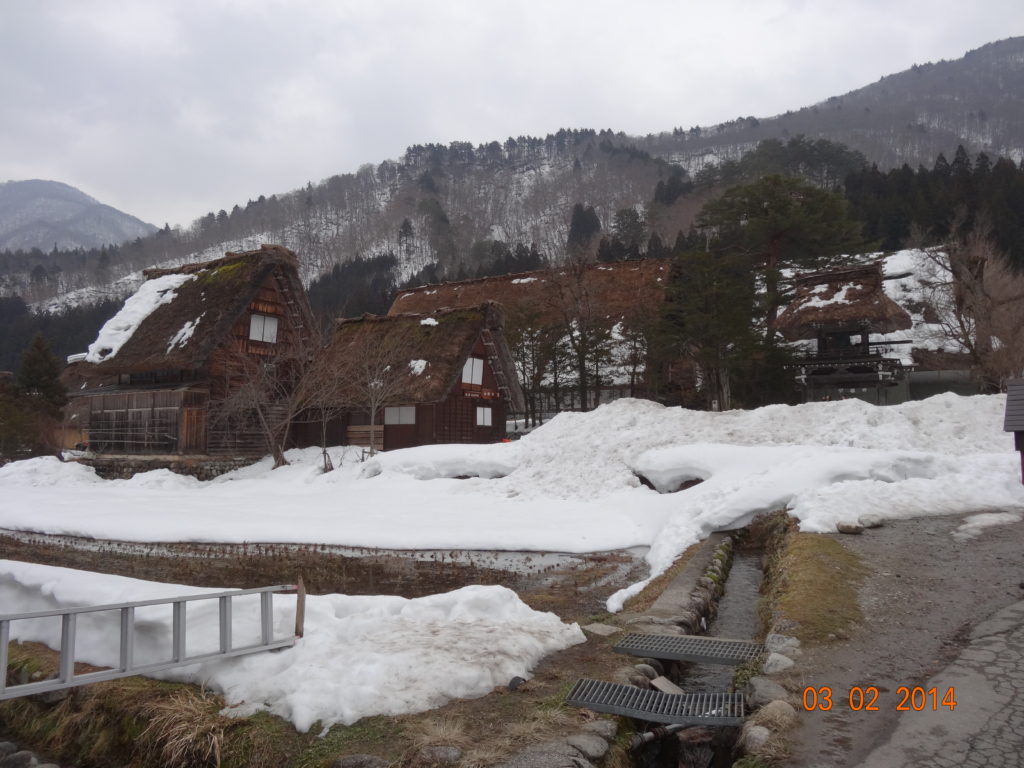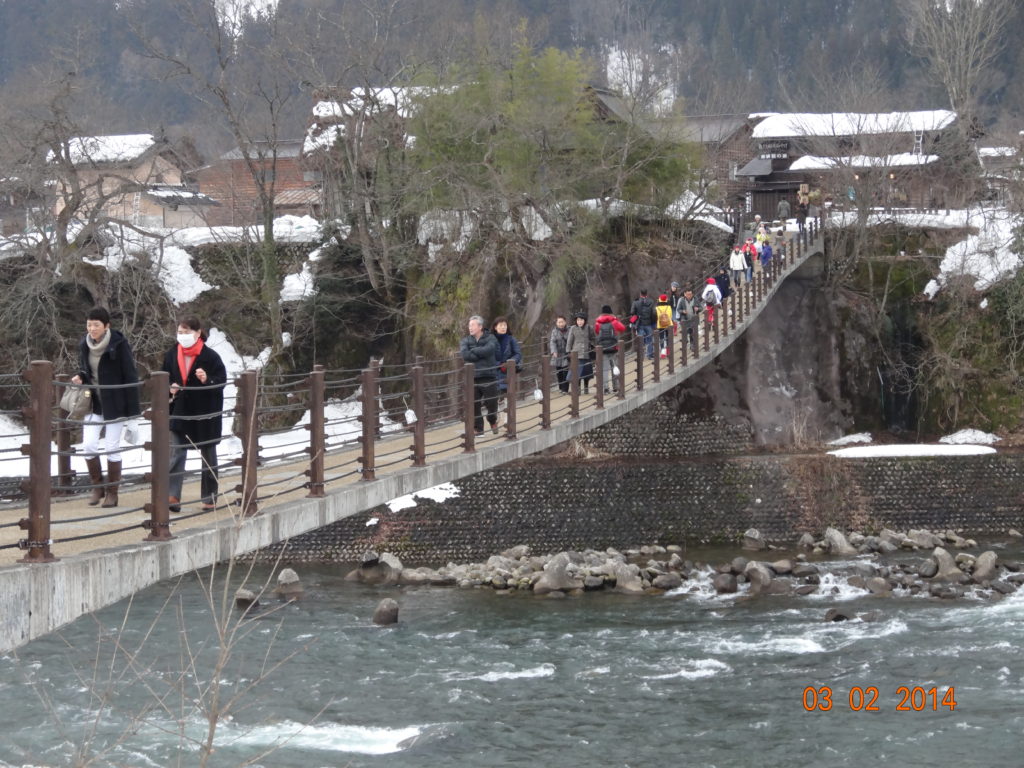Travel period Feb 2014
Well preserved traditional thatched roofs farmhouses
We travelled to Shirakawa-go from Kanazawa by bus. The bus stop was literally in front of Kanazawa station, only a few minutes walk from the hotel we stayed in. Nohi or Hokutetsu Bus operates hourly between Kanazawa and Shirakawa-go, and the one-way trip takes about 75 minutes and costs 1,850 yen, while the round trip ticket is available for 3,290 yen. Seat reservations are mandatory.

About Shirakawa-go
With hundreds of years of history, Shirakawa-go is one of Japan’s cultural treasures. In fact, in 1995 this majestic, picture-perfect village was recognized by UNESCO as a World Cultural Heritage Site.

Nestled in the mountainous Gifu Prefecture in the central region, the surrounding peaks add to its irresistibly rustic charm, which draws in tourists, mostly on a Central Japan packaged tours or a day trip from Nagoya.
Walking around Shirakawa-go
Stepping off the bus we are surrounded by snow and mountains on every side, breathing in the fresh air that smells crisp and earthy. It feels like we have stepped back in time, back to the Edo period and the highlight of Japanese culture. A time of shoguns and samurais, a time that has inspired countless books and movies.

It is especially spectacular in winter when the thick snow blankets transform the site into a winter wonderland. In fact, the technique and construction style of the houses combined with the region’s colder climate gave birth to a tradition that has equally become one of the defining characteristics of this cultural heritage treasure.

We crossed the bridge over the calm Shogawa River leading us to the reason we came here – the Ogimachi village famous for gassho-zukuri houses; it’s a unique architecture style special for the Hida district of Japan (inland in the mountains).
They are steep straw-roofed homes made of wood. Due to harsh and unforgiving winters with a lot of snow, the roofs of the houses are steeply angled to prevent the snow from piling up. “Gassho” comes from the Japanese word for prayer, as the steep shape of the roofs resembles praying hands.
The art of the gassho-zukuri construction is sadly dying out, and most of the remaining houses of this architecture style has been moved to folk villages. Only about 600 people live in this village today.

We walked along narrow roads, covered with snow and well-maintained houses, but it was wet and cold during our visit however we felt so relaxed and calm, walking among these old Japanese houses that have such a special place in Japanese culture and history. All the stress, hustle and bustle from the big city are long gone.


We stayed in Shirakawa-go for around one and half to two hours that day; it was a day trip so we didn’t stay overnight. If you want to step up your Shirakawa-go experience, you can stay in one of the Gassho-style houses.
Most of these traditional structures have been opened up to the public by the owners as guesthouses. Travelers can have a taste of home-cooked meals or can even experience eating around an irori hearth with the host family or other guests. Used for cooking food and keeping the house warm, an irori hearth is a crucial element in traditional Japanese houses.

There are quite a number of guesthouses in Shirakawa-go, but travelers who want to spend the night must book in advance, especially during peak season.

Ogimachi village
Ogimachi village in Shirakawa-go was declared a UNESCO World Heritage Site in 1995. It has the largest concentration of gassho-zukuri buildings in Japan, with over 110 fine houses, some of which are over 250 years old.

This village is also the most accessible, as it is easy to get to by bus from Takayama and Kanazawa. From the bus stop of Shirakawa-go, there is just a short walk over the bridge to the Ogimachi gassho style village.

The bridge crosses the peaceful and calm river Shogawa. From the bridge, you have a lovely view of the mountains.

The Ogimachi village is rustic and lovely at the same time. Even though many of the gassho-zukuri houses have been converted into museums, they still present a view of the old rural farm life of Japan found in few other places.

We would love to explore Shirakawa-go more, unfortunately the weather was not on our side (wet and freezing cold), it was REALLY COLD to the point where our noses were red all the time and our ears felt like they’re continuously stung by a bee. We had to stay in the tourist information center most of the day. Despite the weather it was a nice place to visit, and one day we would like to come here again to witness the beauty of Shirakawa-go has to offer.
Note: The information provided in this post was correct at time of publishing but may change. For final clarification please check with the relevant service.
Related Posts

